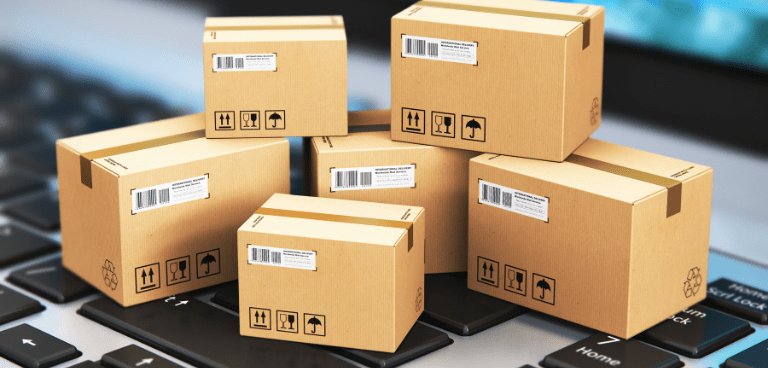The Blueprint of Effective Packaging and Shipping in Your PSD

The Blueprint of Effective Packaging and Shipping in Your PSD
This post is part of a series. Catch the first post, 6 Things to Include in Your Product Specification Document to Avoid Product Design Pitfalls, here.

What to Include in the Packaging and Shipping Section of Your Product Specification Document
This section outlines all the important details about how your product will be packaged, shipped, and delivered to your customers. Here’s what we’ll cover:
-
Packaging
-
Shipping
-
Delivery
-
International shipping
Let’s dig into each in detail.
1. Packaging
The packaging section of your production specification document should include details about how your product will be packaged. Here are a few key things to consider:
-
Materials: What materials will be used to package your product? Will you use boxes, envelopes, bubble wrap, or other materials? It’s important to consider the materials that will protect your product best.
-
Size: What size will your packaging be? Will it be customized to fit your product, or will you use off-the-shelf packaging? It’s essential to consider the size of your packaging to ensure it’s manageable for your product.
-
Design: What will the design of your packaging look like? Will it feature your branding or any specific graphics? The design of your packaging can make a big impact on how customers perceive your product.
2. Shipping
The shipping section of your production specification document should include details about how your product will be shipped. Here are a few key things to consider:
-
Carrier: Which carrier will you use to ship your product? Will you use a specific carrier like FedEx or UPS, or will you work with a third-party logistics provider?
-
Shipping speed: What shipping speed will you offer to your customers? Will you offer overnight shipping, two-day shipping, or ground shipping? It’s important to consider the right shipping speed for your product and your customers.
-
Tracking: Will you provide tracking information to your customers? It’s important to consider how you’ll provide tracking information so customers can track their packages and stay informed about delivery.
3. Delivery
The delivery section of your production specification document should include details about how your product will be delivered to your customers. Here are a few key things to consider:
-
Delivery method: How will your product be delivered to your customers? Will you use a doorstep delivery or require a signature? It’s important to consider the right delivery method for your product and your customers.
-
Delivery location: Will you deliver your product to your customers’ homes or a nearby pickup location? It’s important to consider the delivery location that’s most convenient for your customers.
-
Delivery date: When will your product be delivered? Will you provide an estimated delivery date or a specific delivery date? It’s important to consider the delivery date so customers know when to expect their packages.
4. International Shipping
If you plan to ship your product internationally, you must include additional information in your production specification document. Here are a few key things to consider:
-
Customs: What customs documents will you need to include with your shipment? It’s important to research the specific customs requirements for each country you plan to ship to.
-
Duties and taxes: Who will pay duties and taxes on the shipment? Will you cover these costs or require the customer to pay them?
-
Shipping regulations: What shipping regulations apply to the countries you plan to ship to? It’s important to consider any regulations related to shipping to certain countries.
In Conclusion
In conclusion, your production specification document’s packaging and shipping section is critical to ensuring that your product reaches your customers in good condition and on time. By including the necessary information in this section, you can help your manufacturing team and shipping partners ensure your products are packaged appropriately and shipped efficiently.
To help you get started, we’ve developed a product specification workbook and worksheet, essentially a “paint by numbers.”
Download both for free here and get started on your PSD immediately.
Share this article
